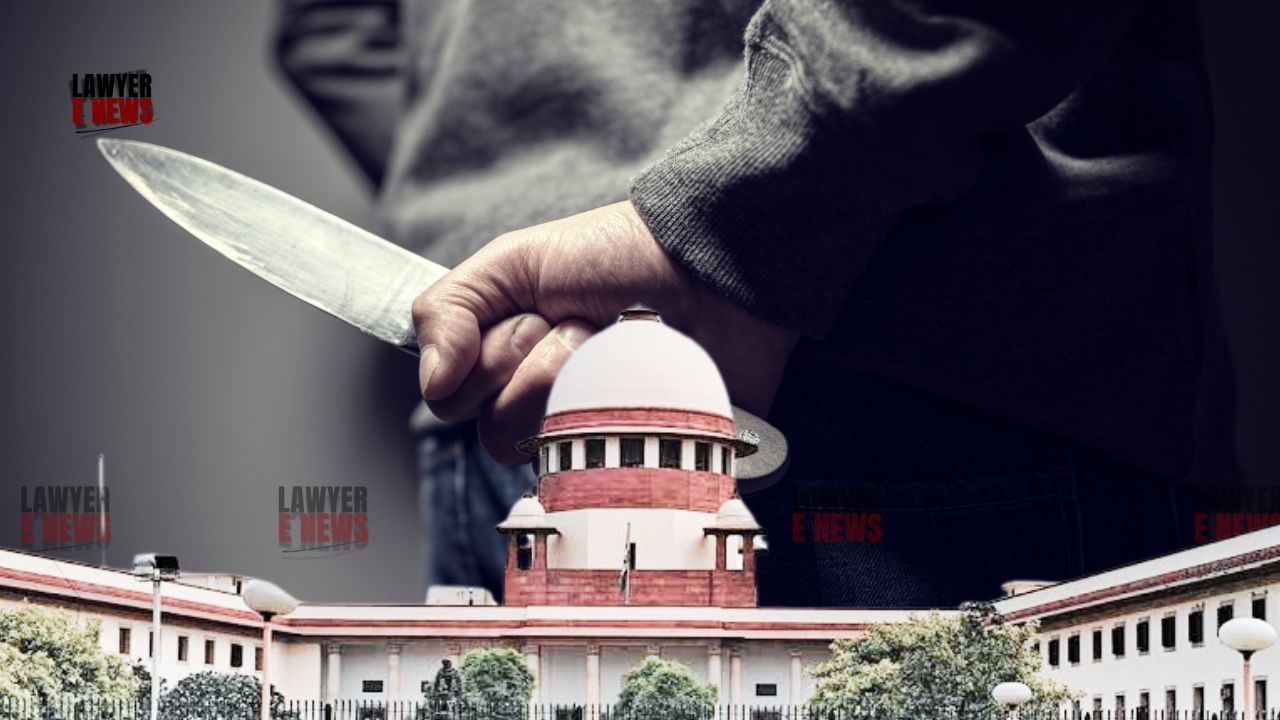-
by sayum
19 December 2025 10:48 AM



Courts Must Evaluate Whether a Child’s Testimony Is the Result of Personal Observation or External Influence – In a landmark judgment Supreme Court of India overturned the acquittal of a man accused of murdering his wife and restored the conviction imposed by the Trial Court. The ruling came in the case of The State of Madhya Pradesh v. Balveer Singh, Criminal Appeal No. 1669 of 2012, wherein the High Court had set aside the conviction primarily on the ground that the child witness, a seven-year-old girl, was tutored.
The Supreme Court, while setting aside the High Court's judgment, held that the testimony of a child witness cannot be rejected solely on the ground of possible tutoring if it is otherwise credible and inspires confidence. The Bench comprising Justices J.B. Pardiwala and Manoj Misra ruled,
"A child witness who has withstood cross-examination and provided a consistent account of the incident cannot be disbelieved merely because of the possibility of tutoring. Courts must assess whether the child’s testimony is the voluntary expression of personal observation or the result of external influence."
The case revolved around the unnatural death of Virendra Kumari, whose body was clandestinely cremated by her husband, Balveer Singh (the accused), on the night of July 15, 2003. The prosecution alleged that Singh murdered his wife and burnt her body to destroy evidence. The incident came to light after the deceased’s seven-year-old daughter (PW6, Rani) provided a detailed account of how her father strangled her mother and took the body away for cremation
The Trial Court convicted Balveer Singh under Sections 302 and 201 of the IPC based on circumstantial evidence and the testimony of PW6, the minor daughter of the deceased. However, the Madhya Pradesh High Court overturned the conviction, holding that the child witness was tutored and her testimony lacked independent corroboration.
The State of Madhya Pradesh challenged this decision before the Supreme Court, arguing that the High Court erred in mechanically discarding the child's testimony without properly assessing its credibility.
The Supreme Court extensively examined the legal principles governing the admissibility of child witness testimony. It reiterated that while courts must be cautious in assessing statements made by young witnesses, their testimony cannot be outrightly rejected on mere assumptions of tutoring.
Citing State of M.P. v. Ramesh (2011) 4 SCC 786, the Court held, "The testimony of a child witness who is found competent to depose, meaning that the child understands the sanctity of giving evidence, cannot be discarded merely due to age. The evidence must be evaluated to determine whether it is a product of independent recollection or external influence."
The Supreme Court further referred to Arbind Singh v. State of Bihar (1995 Supp (4) SCC 416), where it was observed that courts must look for corroboration if a child’s testimony betrays traces of tutoring. However, the Supreme Court in the present case clarified that if the core content of a child witness’s deposition is found to be natural, coherent, and consistent, it does not require independent corroboration.
The Court categorically stated: "A child’s ability to accurately recall events is not diminished by age. If the testimony explains the relevant facts without material contradictions or embellishments, it does not require corroboration. Courts must focus on whether the witness describes the event in a manner consistent with human experience."
Delay in Recording Statement Cannot Be Sole Ground for Discarding Evidence
The Supreme Court also addressed the High Court’s finding that the delay of 18 days in recording the child’s statement raised doubts about its authenticity. It held that: "Merely because the police recorded the statement of the child witness after a delay, it does not render it inadmissible. The defense must establish that the delay was deliberate or that it resulted in material manipulation of evidence. Courts must not discard evidence on procedural technicalities when it otherwise inspires confidence."
The Court cited Ranbir v. State of Punjab (1973) 2 SCC 444, which laid down that delay in recording a witness’s statement is material only if it suggests that the witness was introduced to falsely support the prosecution’s case.
Invocation of Section 106 of the Evidence Act – Burden on Accused to Explain Wife’s Death
Apart from upholding the testimony of the child witness, the Supreme Court also invoked Section 106 of the Indian Evidence Act, which states that when a fact is especially within the knowledge of an accused, the burden of proving that fact is on him.
The Court noted that:
The accused did not explain the cause of his wife’s death despite admitting that he was present at home on the night of the incident.
Instead of informing the deceased’s family, the accused secretly cremated the body, raising strong suspicion.
The accused absconded after the incident, which further indicated conscious guilt.
Applying the principles laid down in Trimukh Maroti Kirkan v. State of Maharashtra (2006) 10 SCC 681, the Supreme Court held: "When a crime takes place inside a house, where the accused and the deceased were the only persons present, the burden shifts to the accused to explain the circumstances leading to the death. If the accused offers no explanation or provides a false explanation, it strengthens the inference of guilt."
The Court emphasized that: "The law does not require the prosecution to prove how exactly the crime was committed when direct evidence is unavailable. Circumstantial evidence, if cogent and forming a complete chain of events leading to only one hypothesis—that of guilt—is sufficient for conviction."
The Supreme Court set aside the acquittal granted by the Madhya Pradesh High Court and restored the conviction and life sentence imposed by the Trial Court. The accused, Balveer Singh, was directed to surrender within four weeks to serve his sentence.
The Court, in its concluding remarks, stressed the responsibility of courts to ensure that procedural technicalities do not lead to the failure of justice, especially in cases involving crimes against women and vulnerable witnesses. The judgment categorically stated: "Judges must balance their duty of ensuring fairness to the accused with their duty to protect the integrity of justice. Courts cannot allow criminals to go unpunished merely due to procedural lapses or hyper-technical scrutiny of evidence when the case as a whole presents a clear picture of guilt."
This judgment sets an important precedent on the admissibility and reliability of child witness testimony, while also reinforcing the principles of circumstantial evidence and the shifting burden of proof under Section 106 of the Evidence Act.
Date of decision: 24/02/2025
